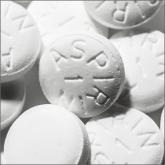Article

Maximizing lifestyle changes to manage type 2 diabetes
- Author:
- Stephen McMullan, MD
- Dustin K. Smith, DO
- Justin Kimsey, DO
Four dietary plans can reduce A1C levels but may differ in long-term outcomes. Intensive lifestyle interventions may even make remission possible...
Article

How to refine your approach to peripheral arterial disease
- Author:
- Dustin K. Smith, DO
- Michael J. Arnold, MD
- Job Larson, MD
Early recognition, management of comorbid conditions, and appropriate treatment of peripheral arterial disease can help you improve your patient’s...
Article

Primary prevention of VTE spans a spectrum
- Author:
- Michael J. Arnold, MD
- Dustin K. Smith, DO
High mortality from VTE makes primary prevention appealing. Guidelines and assessment tools offer a variety of patient-specific strategies and...
Article

Aspirin for primary prevention: USPSTF recommendations for CVD and colorectal cancer
- Author:
- Dustin K. Smith, DO
- Theodore Demetriou, DO
- Christopher Weber, MD
Patient age, baseline cardiovascular disease risk, bleeding risk, and personal preference regarding aspirin use are key to decision making. A...
